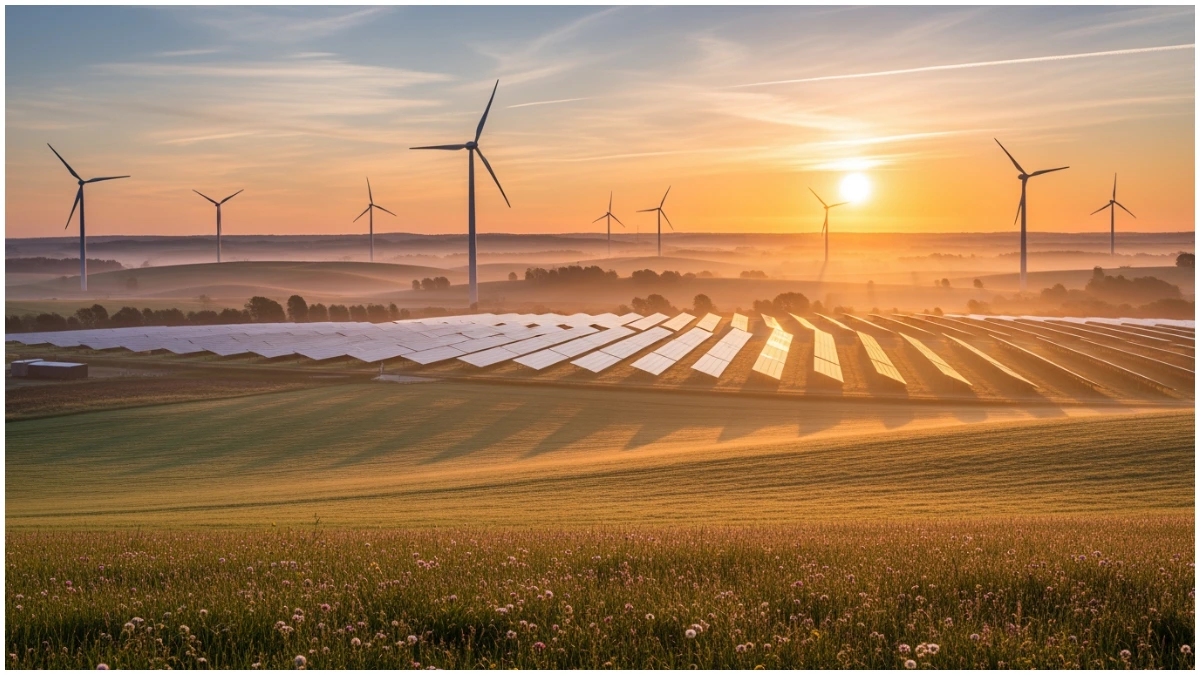Energy powers every aspect of modern life, from the lights in our homes to the vehicles we drive and the industries that create the products we use daily. Yet not all energy sources are created equal. Understanding the fundamental differences between renewable and non-renewable energy is crucial for anyone who wants to make informed choices about their environmental impact and participate meaningfully in the global shift toward sustainable living.
I’m Al, and I’ve spent years exploring how everyday people can contribute to positive environmental change through practical choices. Whether you’re curious about where your electricity comes from, concerned about climate change, or simply looking for ways to reduce your household’s carbon footprint, this guide will break down everything you need to know about renewable and non-renewable energy sources. Keep reading to discover how these energy systems work, their impacts on our planet, and most importantly, the concrete actions you can take today to support a cleaner energy future.
Understanding Non-Renewable Energy Sources
The Fossil Fuel Foundation: Non-renewable energy sources are natural resources that cannot be replenished at the rate we consume them, making them finite and destined for eventual depletion. The most common non-renewable sources include coal, oil, and natural gas, which collectively still provide around 80% of the world’s energy supply today.
Ancient Origins: These fossil fuels formed over millions of years through a fascinating geological process. Dead plants and microscopic marine organisms settled on ocean floors and in swamps, where they were buried under layers of sediment. As pressure and temperature increased over time, this organic material underwent chemical transformation, turning into the coal, oil, and natural gas we extract today. Coal typically formed from ancient swamp vegetation, while oil and gas originated from marine microorganisms like plankton.
Nuclear Energy’s Role: Another significant non-renewable energy source is nuclear power, which uses uranium as fuel. While uranium itself is relatively abundant in the Earth’s crust, it exists in finite quantities and takes specific processing to become usable. The fissile isotope uranium-235 makes up only about 0.7 percent of natural uranium, requiring enrichment to 3-5 percent for most commercial reactors.
The Depletion Reality: What makes these sources “non-renewable” is simple yet concerning: we’re using them millions of times faster than nature can create them. Once depleted, they’re gone for good, at least on any timescale meaningful to human civilization.
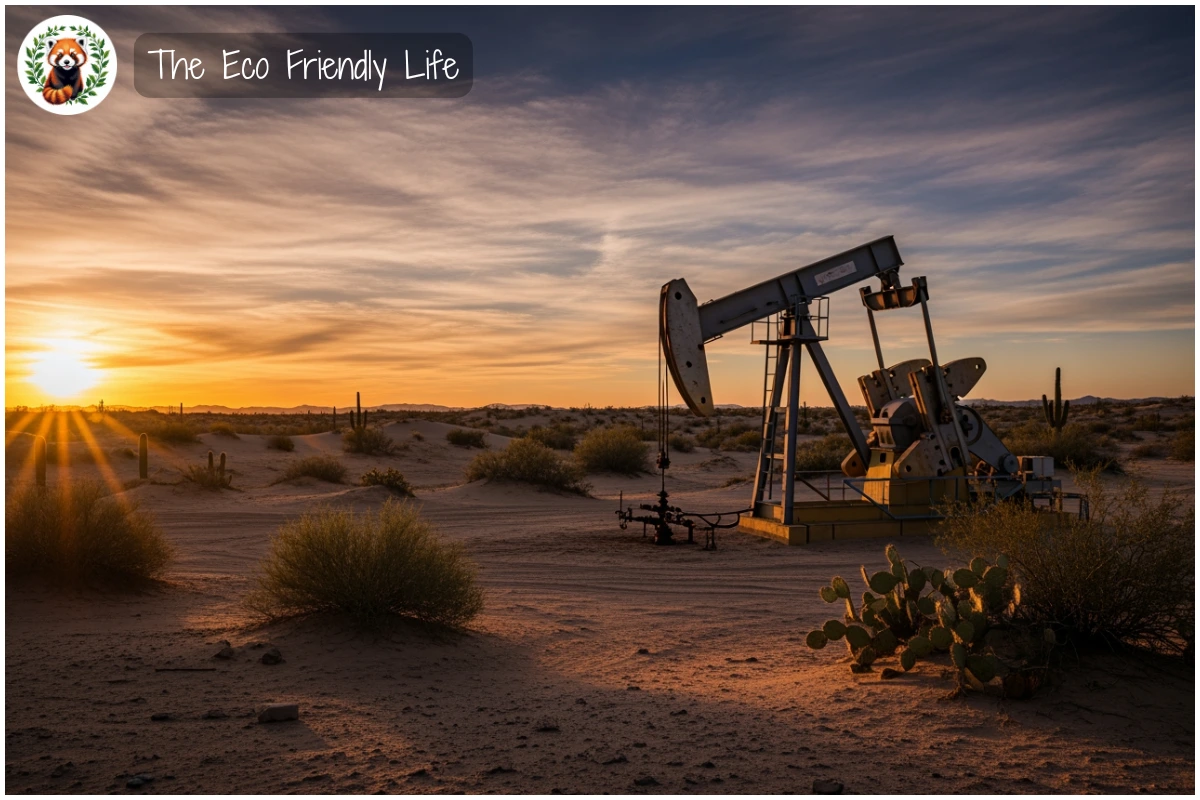
Now that we understand what non-renewable sources are and where they come from, let’s explore the renewable alternatives that are reshaping our energy landscape.
Exploring Renewable Energy Sources
Powered by Nature: Renewable energy comes from sources that naturally replenish themselves on a human timescale, meaning they won’t run out no matter how much we use them. Under pathways to limit warming, almost 90% of electricity generation should come from renewable sources by 2050, highlighting their critical role in our energy future.
Solar Energy’s Bright Future: Solar power harnesses energy from sunlight using photovoltaic panels or thermal collectors. Solar energy is experiencing remarkable growth, with technology costs having fallen 82% since 2010, making rooftop solar systems a viable option for millions of households worldwide. This dramatic cost reduction has transformed solar from an expensive alternative into one of the most affordable energy sources available.
Wind Power’s Momentum: Wind energy captures the kinetic energy of moving air through turbines, converting it into electricity. Wind power grew by a record 273 TWh in 2021, marking it as the fastest-growing power generation technology that year. Both onshore and offshore wind farms are expanding rapidly, with offshore installations offering particularly high energy yields due to stronger, more consistent winds over water.
Hydropower’s Reliability: Hydroelectric power generates electricity by channeling water through turbines, typically at dams or run-of-river installations. As one of the oldest forms of renewable energy, hydropower generates 14.6% of global electricity as a clean energy source. Unlike solar and wind, hydropower can operate continuously regardless of weather conditions, making it an excellent baseload power source.
Emerging Technologies: Beyond these established sources, renewable energy encompasses geothermal power (tapping Earth’s internal heat), biomass (converting organic matter into energy), and emerging technologies like tidal and wave energy. Each offers unique advantages suited to different geographical locations and energy needs.
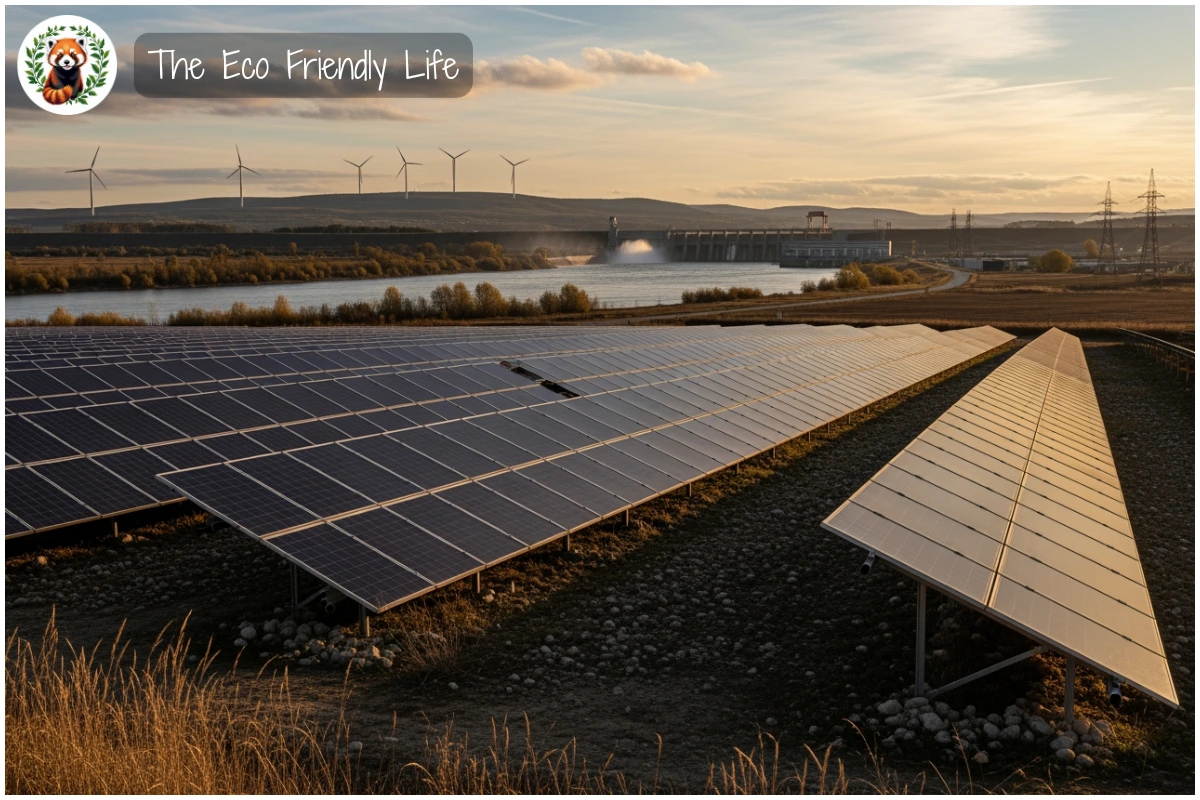
Understanding these renewable sources naturally leads to the critical question: why does the choice between renewable and non-renewable energy matter so profoundly for our planet and our health?
The Environmental Impact: A Tale of Two Energy Systems
Climate Change Connection: Burning fossil fuels releases massive quantities of carbon dioxide and other greenhouse gases into the atmosphere, with fossil fuels accounting for over 75 per cent of global greenhouse gas emissions and nearly 90 percent of all carbon dioxide emissions. Human activities now emit enormous quantities of carbon dioxide annually, primarily from energy use, driving global temperatures to unprecedented levels.
Air Quality and Health: The environmental toll extends far beyond climate change. Fossil fuel combustion releases nitrogen oxides, sulfur dioxide, and particulate matter, creating smog and acid rain that harm both human health and ecosystems. About 99 per cent of the global population breathes air that exceeds WHO air quality limits, and threatens their health. Air pollution is attributed to 8.1 million deaths in 2021—more than 1 in 8 deaths worldwide.
Water and Land Degradation: Fossil fuel extraction and use contaminate water supplies through acid rain, which increases chemical weathering and harms aquatic ecosystems. Traditional power plants consume enormous volumes of water for cooling operations. Mining operations for coal and drilling for oil disrupt vast landscapes and destroy habitats.
Renewable energy offers a stark contrast. Wind and solar facilities produce electricity with virtually zero greenhouse gas emissions during operation and use significantly less water. Clean energy in the United States saved 228 billion gallons of water in 2023 alone. While renewable infrastructure does require land, well-planned projects can coexist with agriculture and conservation efforts, and projected biodiversity risks are up to 76 percent lower in rapid renewable transition scenarios compared to continued fossil fuel dependence.
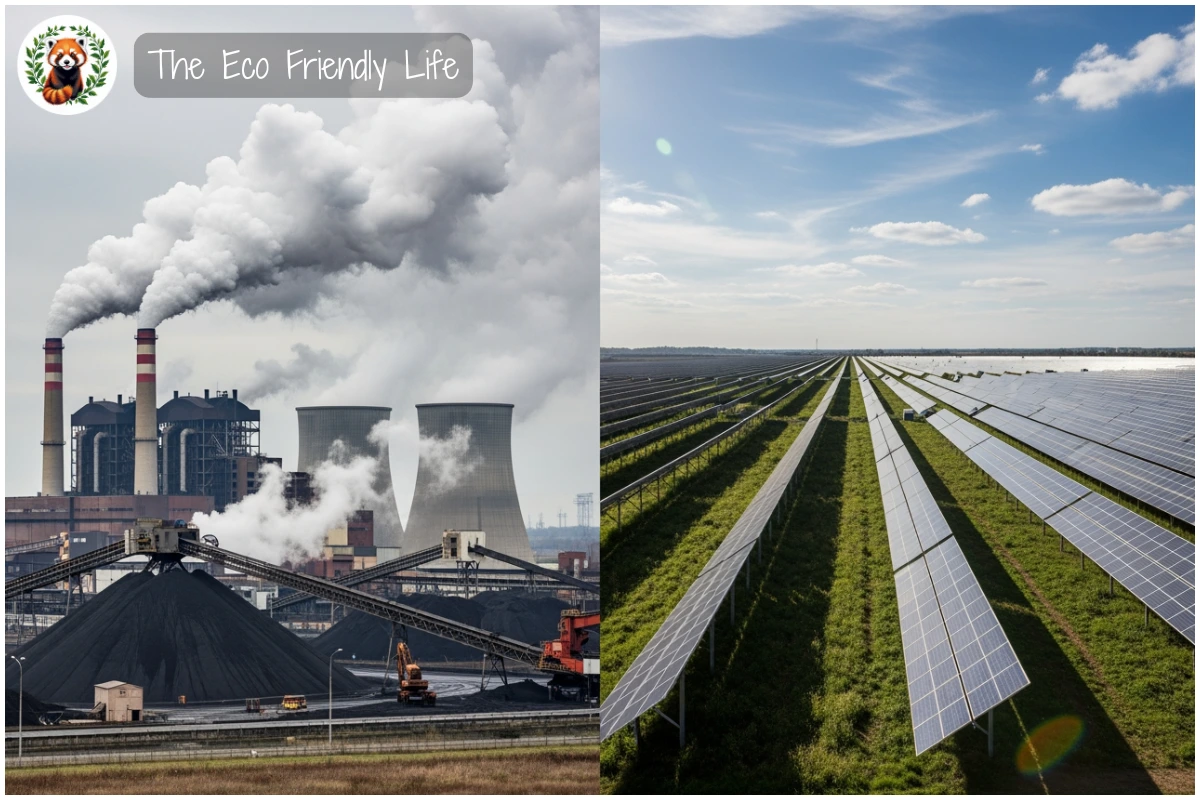
Recognizing these stark environmental and health differences brings us to an important consideration: how can we actively support and learn about renewable energy solutions?
Retailers That Support the Planet – Our Product Recommendations
Transitioning to renewable energy isn’t just about large-scale infrastructure—it begins with education and awareness. These two retailers offer valuable resources to help adults and families understand and engage with renewable energy solutions.
Our Retailer Recommendation for Adults
Offshore Wind Learning
Offshore Wind Learning provides accessible, world-class e-learning designed to build knowledge about one of the fastest-growing sectors in renewable energy. Their CPD-accredited courses break down complex offshore wind technology into bite-sized, interactive lessons suitable for anyone from industry professionals to curious learners wanting to understand this critical climate solution. By democratizing knowledge about offshore wind—a technology that harnesses powerful ocean breezes to generate clean electricity—this platform helps individuals explore career opportunities while understanding how this renewable source contributes to global energy needs.
Our Retailer Recommendation for Kids/Families
MEL Science – Hands-On STEM Learning for Young Minds
MEL Science offers monthly subscription kits that bring science education home through hands-on experiments and digital experiences. Their renewable energy-focused kits and virtual reality lessons allow children aged 5 and up to build working models, understand energy conversion principles, and explore clean technology concepts through engaging play. By fostering early interest in sustainable energy solutions, these educational tools help raise the next generation of innovators who will continue advancing our renewable energy transition.
With educational foundations in place, let’s explore the practical ways households can directly adopt and benefit from renewable energy technologies.
Making the Switch: How to Support Renewable Energy at Home
Installing Solar Power: Rooftop solar represents one of the most impactful individual actions for supporting renewable energy. With over 30 percent of homes in regions like New South Wales now using solar power, the technology has proven both practical and economically beneficial. Solar systems reduce the electricity you purchase from the grid, potentially saving households hundreds of dollars annually while generating clean power during daylight hours when consumption often peaks.
Choosing Green Energy Plans: If installing solar isn’t feasible—perhaps you rent or live in an apartment—you can still support renewables by switching to a green energy provider. Many electricity retailers now offer 100 percent renewable energy plans, with companies purchasing renewable energy certificates or directly sourcing power from wind and solar farms. This simple switch requires no installation and ensures your household electricity consumption drives demand for clean energy generation.
Energy Efficiency as Foundation: Reducing overall energy consumption amplifies the impact of renewable energy. Simple efficiency measures like replacing traditional bulbs with LEDs (which use 75 percent less energy), improving insulation, and upgrading to energy-efficient appliances lower your total energy needs, making renewable sources more capable of meeting demand.
Smart Technology Integration: Modern technology makes optimizing renewable energy easier than ever. Smart thermostats, programmable appliances, and energy monitoring systems allow you to align electricity use with periods of peak solar generation, maximizing the value of renewable power whether you generate it yourself or purchase it from the grid. Running dishwashers and washing machines during sunny midday hours when solar output peaks reduces evening demand on the grid.
Heat Pumps and Electrification: Replacing gas appliances with electric alternatives powered by renewable electricity accelerates the transition away from fossil fuels. Heat pumps for space heating and water heating operate with remarkable efficiency and, when paired with renewable electricity, produce zero carbon emissions compared to gas systems.
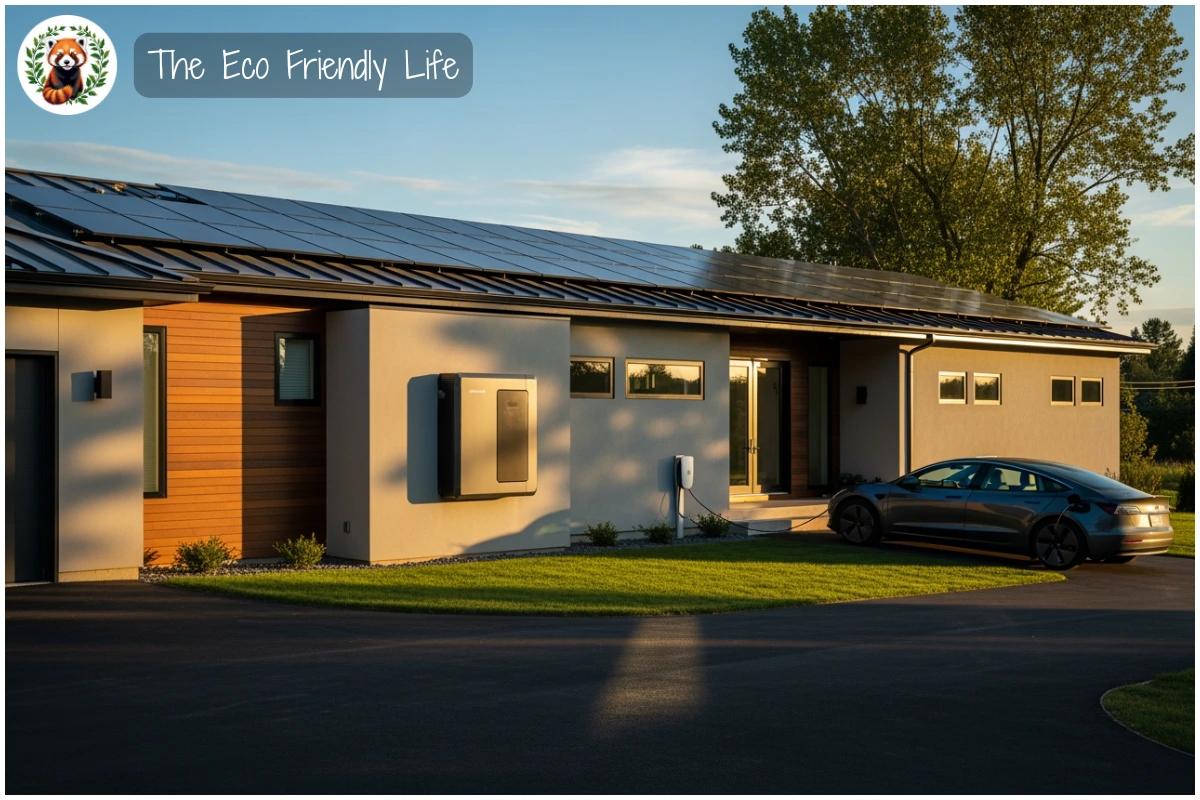
Beyond these larger investments, there are numerous simple daily actions that collectively make a significant difference in reducing fossil fuel dependence.
Practical Daily Tips You Can Action Today
Here are ten straightforward actions you can implement immediately to reduce fossil fuel consumption and support renewable energy:
| Tip | How to Implement | How It Helps |
|---|---|---|
| Switch off standby devices | Unplug electronics or use power strips to eliminate phantom loads that consume energy even when devices are off. Turn off the power strip when leaving rooms or at night. | Reduces overall electricity demand, decreasing the need for fossil fuel power generation and lowering your energy bills. |
| Adjust your thermostat | Lower heating by one degree in winter or raise cooling by one degree in summer. This minimal change won’t affect comfort significantly. | Can reduce heating bills by up to 10 percent while decreasing energy consumption and associated emissions. |
| Choose public transportation | Use buses, trains, or carpooling for daily commutes when possible. Plan shopping trips to accomplish multiple errands in one outing. | Dramatically reduces personal fossil fuel consumption from gasoline and diesel, cutting transportation emissions by thousands of pounds annually. |
| Wash clothes in cold water | Change washing machine settings to cold water cycles instead of hot water washing for most laundry. | Uses 80 percent less energy per load since heating water accounts for most of a washing machine’s energy consumption. |
| Support renewable-powered businesses | Research and prioritize companies that use renewable energy in their operations when making purchasing decisions. | Sends market signals that encourage more businesses to adopt clean energy while rewarding those already committed to sustainability. |
| Reduce, reuse, recycle | Minimize purchasing packaged goods, reuse containers and bags, and properly recycle materials like plastic, paper, and aluminum. | Manufacturing from recycled materials requires less energy than producing from raw materials, reducing industrial fossil fuel consumption. |
| Shift peak usage | Run energy-intensive appliances like dishwashers and dryers during midday when solar generation peaks rather than evening hours. | Maximizes use of renewable energy on the grid while reducing demand during peak times when fossil fuel plants typically increase output. |
| Walk or cycle short distances | Choose walking or cycling for trips under two kilometers instead of driving. | Eliminates fossil fuel consumption entirely for short trips while improving personal health and reducing local air pollution. |
| Use natural lighting | Open curtains and blinds during daytime, arrange workspaces near windows, and turn off artificial lights when natural light suffices. | Reduces electricity consumption for lighting, which decreases demand on power plants burning fossil fuels. |
| Insulate and seal your home | Add weatherstripping to doors and windows, seal gaps with silicone, and improve attic insulation to prevent heat loss or gain. | Reduces heating and cooling energy needs substantially, lowering fossil fuel consumption for climate control by maintaining stable indoor temperatures. |
With practical daily actions covered, let’s address some common questions people have about renewable and non-renewable energy.
FAQs
Here are answers to common questions about renewable and non-renewable energy:
Can renewable energy really replace fossil fuels completely?
Yes, with proper planning and infrastructure development. The potential exists for renewable sources to meet global energy demand multiple times over, with enough solar energy alone to power humanity many times over and wind energy capable of meeting substantial portions of our needs.
Is renewable energy more expensive than fossil fuels?
Not anymore. Solar, wind, and other renewable technologies have become cost-competitive with or cheaper than fossil fuels in most markets, with costs continuing to decline as technology improves and deployment scales increase.
What happens when the sun isn’t shining or wind isn’t blowing?
Modern energy systems address this through battery storage, diverse renewable sources, grid interconnections, and complementary technologies like hydropower that provide reliable baseload power regardless of weather conditions.
How long do renewable energy systems last?
Solar panels typically last 25-30 years, wind turbines 20-25 years, and hydroelectric facilities can operate for 50-100 years or more with proper maintenance, making them long-term investments with decades of clean energy production.
Organizations to Support – Our Recommendations
Consider supporting these global organizations advancing renewable energy:
- Clean Air Task Force works worldwide with policymakers and technical experts to advance technologies and policies needed for global energy decarbonization. They engaged over 100 policymakers globally to secure $370 billion in green energy funding. Support their mission through their donation page.
- SolarAid fights energy poverty and climate change by distributing solar lights to communities across sub-Saharan Africa without grid access. They’ve provided 2.3 million solar lights to 12.5 million people, helping families save $290 million previously spent on dangerous kerosene. Donate at SolarAid’s donation page.
- Renewable World creates locally-led renewable energy projects in Kenya and Nepal, installing solar-powered water pumps, clean cooking solutions, and electricity systems in rural health and education facilities. They’ve reached 123,000 people with renewable solutions while averting 33,000 tons of carbon emissions. Contribute through their donation page.
These organizations translate individual contributions into tangible renewable energy projects that transform communities while combating climate change.
Resources and Further Reading
Deepen your understanding with these authoritative renewable energy resources:
- International Renewable Energy Agency (IRENA) produces comprehensive, reliable datasets on renewable energy capacity, generation, and policies worldwide. Their annual publications track global progress and provide evidence-based analysis. Access their resources at IRENA’s data portal.
- International Energy Agency (IEA) offers detailed analysis of global energy trends, including renewable energy deployment, fossil fuel use, and pathways to net-zero emissions. Their World Energy Outlook provides essential data for understanding the energy transition. Explore their work at the IEA website.
- REN21 Renewables Global Status Report delivers an independent, multi-stakeholder assessment of renewable energy progress across all sectors globally, offering the most comprehensive annual overview of renewable energy developments. Download reports from REN21’s website.
These resources provide scientifically rigorous information to inform decision-making and deepen understanding of energy systems and sustainability.
Our Related Articles

How To Make Your Home Energy-Efficient
Rising energy costs and growing environmental concerns are driving more people than ever to rethink how they power their homes. The good news? Making your…
Read More
Climate Change: Causes, Effects And Solutions
The planet we call home is sending us urgent signals. From unprecedented heatwaves scorching cities to devastating floods reshaping coastlines, climate change has moved from…
Read MoreConclusion
The distinction between renewable and non-renewable energy sources fundamentally shapes our environmental future and the legacy we leave for coming generations. While non-renewable fossil fuels powered the industrial revolution and modern development, their finite nature and devastating environmental impacts—from air pollution to climate change—make continued dependence on them unsustainable. Renewable energy sources offer abundant, clean alternatives that can meet global energy needs while protecting the planet.
The transition to renewable energy isn’t just happening at the policy level—it begins with individual choices. From installing solar panels and switching to green energy plans to making conscious daily decisions about transportation and consumption, everyone has a role to play. Each action, multiplied across millions of households, creates the demand and momentum driving systemic change toward a sustainable energy future.
What steps will you take this week to reduce your reliance on fossil fuels and support renewable energy? Whether you’re investigating solar options, adjusting your thermostat, or simply spreading awareness among friends and family, share your commitment and experiences in the comments below. Together, we can accelerate the transition to clean energy and build a healthier planet for all.


